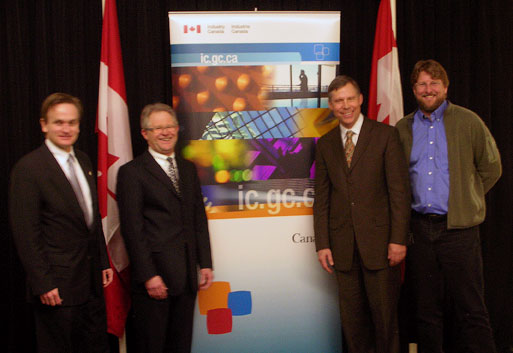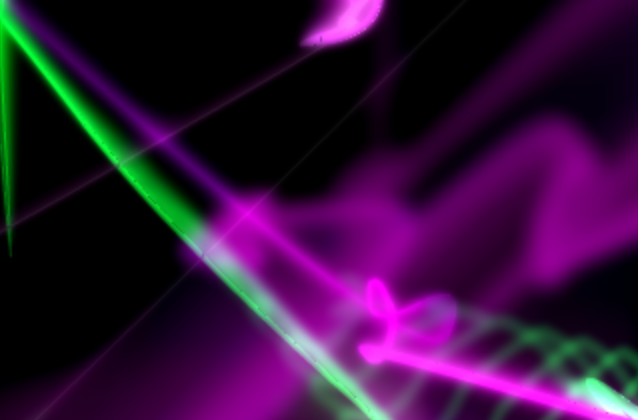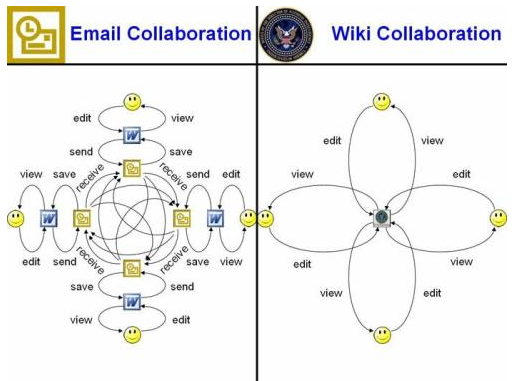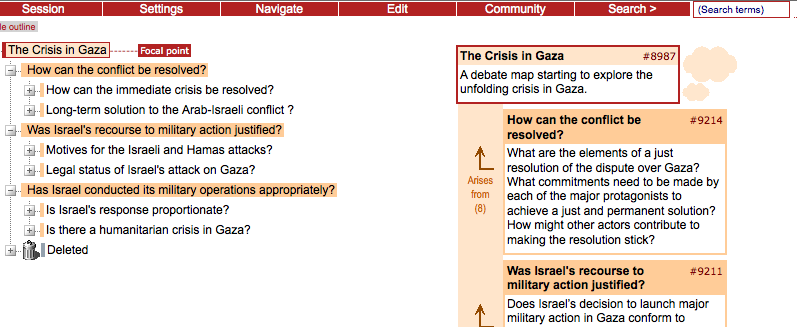Congratulations to Ray Siemens and company for INKE: Implementing New Knowledge Environments which got funding as a Major Collaborative Research Initiative from SSHRC. I’m part of the Interface Design group led by Stan Ruecker.
Category: Visualization
Neave Imagination …big wobbly elephants
Neave Imagination (…big wobbly elephants) is a lovely Flash toy that works great on a large screen.
Play with the big wobbly lines and you’ll soon have an active imagination.
Try his other toys – many are beautiful and they work on a 30″ screen.
Beatrice Warde: The Crystal Goblet
Reading the book on Canadian book design, The Surface of Meaning I came across a reference to Beatrice Warde’s The Crystal Goblet. This was given as a lecture in London in 1930 with the title “Printing Should be Invisible” and was printed in the 1950s. It is a clear and apparently influential statement of the modernist view of how a book design should be transparent letting the ideas shine through. It starts with a metaphor of the book as a goblet.
Imagine that you have before you a flagon of wine. You may choose your own favourite vintage for this imaginary demonstration, so that it be a deep shimmering crimson in colour. You have two goblets before you. One is of solid gold, wrought in the most exquisite patterns. The other is of crystal-clear glass, thin as a bubble, and as transparent. …
Bear with me in this long-winded and fragrant metaphor; for you will find that almost all the virtues of the perfect wine-glass have a parallel in typography. …
Now the man who first chose glass instead of clay or metal to hold his wine was a ‘modernist’ in the sense in which I am going to use that term. That is, the first thing he asked of his particular object was not ‘How should it look?’ but ‘What must it do?’ and to that extent all good typography is modernist. …
It is sheer magic that I should be able to hold a one-sided conversation by means of black marks on paper with an unknown person half-way across the world. Talking, broadcasting, writing, and printing are all quite literally forms of thought transference, and it is the ability and eagerness to transfer and receive the contents of the mind that is almost alone responsible for human civilization. …
the most important thing about printing is that it conveys thought, ideas, images, from one mind to other minds. This statement is what you might call the front door of the science of typography. …
Type well used is invisible as type, just as the perfect talking voice is the unnoticed vehicle for the transmission of words, ideas. ..
it is mischievous to call any printed piece a work of art, especially fine art: because that would imply that its first purpose was to exist as an expression of beauty for its own sake and for the delectation of the senses. Calligraphy can almost be considered a fine art nowadays, because its primary economic and educational purpose has been taken away; but printing in English will not qualify as an art until the present English language no longer conveys ideas to future generations, and until printing itself hands its usefulness to some yet unimagined successor. …
The book typographer has the job of erecting a window between the reader inside the room and that landscape which is the author’s words. He may put up a stained-glass window of marvellous beauty, but a failure as a window; that is, he may use some rich superb type like text gothic that is something to be looked at, not through. Or he may work in what I call transparent or invisible typography. …
Printing demands a humility of mind, for the lack of which many of the fine arts are even now floundering in self-conscious and maudlin experiments. There is nothing simple or dull in achieving the transparent page. Vulgar ostentation is twice as easy as discipline.
Perhaps the time comes when printing reluctantly hands off its usefulness to a digital successor like the Kindle which would explain the (re)discovery of pressing form into paper and other arts of the book. I am not making a prediction and especially not recommending this, just reflecting on how the book need not be so transparent as it was supposed to be. When the burden of usefulness is eased off the shoulders of books they can become post-modern chalices, opaque and shiny.
For another take see Book Design in Canada at Cardigan Industries.
Now for the wine within.
Ruecker’s One Minute Movies
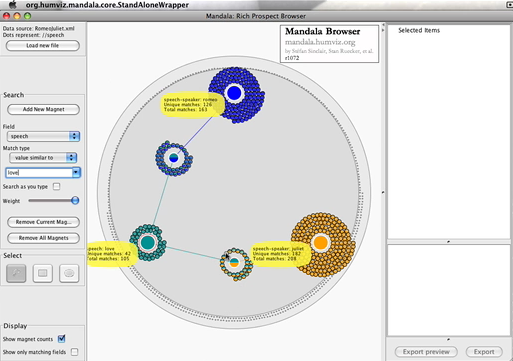
My colleague Stan Ruecker has been create short online movies of humanities computing software tools he is involved in like the Mandala Browser and the Digital Profiles rich prospect browser. These are in the tradition of videos like A Vision of Students Today from the Digital Ethnography folk. There is also the TEI Encoding of Dylan’s Subterranean Homesick Blues. Neat idea – we should get more comfortable with YouTube as a way of conveying ideas.
HASTAC: Digital Textuality and Tools
Over the last few days I’ve been reading and contributing to one of the HASTAC discussion forms on Digital Textuality and Tools. This is led by Angela Kinney and Michael Widner.
Among other things there was a link to an interesting project, Inventoriana for collaborative annotation of manuscript images.
Taco Lab Blog: Siftables and American Shanzhai?
The Taco Lab who are probably best known for the Siftables (small cookie-sized tile computes that sense each other) shown at TED have a blog with some interesting posts like this one on American Shanzhai?. Shanzai literally means “mountain fortress” or the hideout of bandits and it refers to pirate activities like hacking cheap copies of consumer goods (that are heavily marked up.) It is now beginning to refer to a creative subculture of improving or altering electronics outside state (and IP) control. Thus the image above is from the Taco Lab blog and is a example of this creative shanzai – in this case a cell-phone/cigarette pack whose value is in its uniqueness. This got me thinking of all the open projects out there that make it easier to hack things like:
- TuxPhone – a project to develop open hardware and software for a cell phone.
- Arduino – an open electronics prototyping platform that’s great for interactive art projects
- LilyPad Arduino – an open device that is light enough for wearables and e-textile projects
- William Turkel’s Fabrication Lab – a unique (to my knowledge) humanities lab
Webilus.com: the best of the images of the web
Webilus.com :: le meilleur des images du web is a French web site that gathers images and visualizations of the web and computing culture. The image above, for example, compares e-mail collaboration to wiki collaboration showing how much more work it is to use e-mail.
The site is a blog curated by Frédéric COZIC and it has a widget you can install to see the most recent images on your blog.
i hardly know her: Flickr view
I Hardly Know Her (IHKH) is an alternative way to view Flickr photostreams that is simple and effective. You just add your account name to “ihardlyknowher.com” – for example, my stream at geoffreyrockwell. Mouseover the images to get info, click to get a bigger one. Thanks to Peter O for this.
Pliny: Welcome
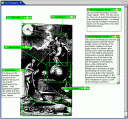 Pliny, the annotation and note management tool by John Bradley at King’s College London just got a Mellon Award for Technology Collaboration.
Pliny, the annotation and note management tool by John Bradley at King’s College London just got a Mellon Award for Technology Collaboration.
The Mellon Awards honour not-for-profit organisations for leadership in the collaborative development of open source software tools with application to scholarship in the arts and humanities, as well as cultural-heritage not-for-profit activities.
Pliny is free and you can try it out on the Mac or PC. John has thought a lot about how tools fit in the research process of humanists.
Debategraph: social mapping debates
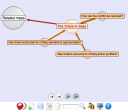 On the Independent I came across the interactive visualization above onMapping the crisis in Gaza. The visualization environment looks like your standard bubblegraph, but has lots of other features as you can see from the toolbar at the bottom. Here is another view:
On the Independent I came across the interactive visualization above onMapping the crisis in Gaza. The visualization environment looks like your standard bubblegraph, but has lots of other features as you can see from the toolbar at the bottom. Here is another view:
The maps can be edited by users – they have wiki features for those who register accounts. In some ways they are communal mind maps. The software comes from Debategraph.org.
